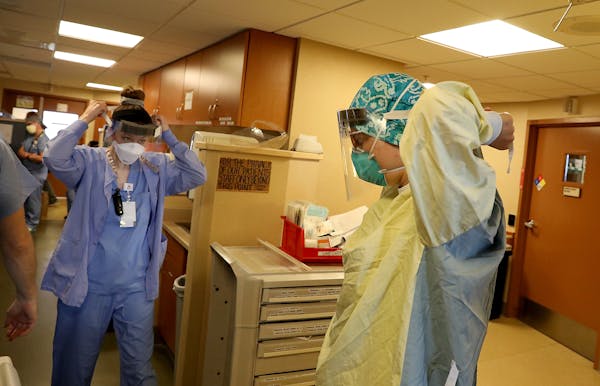Children and teenagers represent the fastest-growing age groups hit by the COVID-19 pandemic, according to new data released Friday by the Minnesota Department of Health that included 5 more deaths and 498 more lab-confirmed cases of the infectious disease.
The number of lab-confirmed cases in Minnesota has increased 37% — from 25,208 on June 1 to 34,616 as of Friday — but the numbers among people aged 6 to 19 increased 61% in the same time frame. And 20-somethings overtook people in their 30s for the first time this week as the age group in Minnesota with the most lab-confirmed cases.
The 7,045 cases among people in their 20s now represent 20% of all cases. More infections in this population might not result in more severe outcomes — only two of 1,411 total deaths so far in the pandemic have involved people younger than 30 in Minnesota. But state health officials worry that these mobile young adults can spread the novel coronavirus that causes COVID-19 to others at greater risk.
The U.S. Centers for Disease Control and Prevention on Thursday updated its list of risks for severe COVID-19, doing away with the age of 65 as a breakpoint and instead simply stating that risk increases with age.
Minnesotans 70 and older make up 12% of known cases in the state, but 81% of COVID-19-related deaths. All five deaths reported Friday involved residents of long-term care or assisted-living facilities, bringing the total of deaths in such facilities to 1,112.
Obesity was added as a leading risk factor to the CDC's list, which also includes heart conditions, chronic kidney disease, and diabetes. Hypertension was removed from the list, even though it is the most common underlying condition found in patients in Minnesota who are hospitalized for COVID-19, according to a state health analysis. CDC officials said that related heart conditions, rather than hypertension, are probably increasing the risks in such individuals.
On Friday, 335 Minnesotans were hospitalized for COVID-19 — including 157 who needed intensive care.
Free COVID-19 testing clinics in Minneapolis and St. Paul following the May 25 police killing of George Floyd found a relatively low rate of infections — roughly 1.5% of the more than 7,700 demonstrators and others who were tested. Health officials have been relieved that these mass events didn't spread the coronavirus further, but are now tracking upticks in young-adult cases related to bars and restaurants.
Limited indoor service at bars and restaurants resumed on June 10 along with fitness clubs and entertainment venues. Minnesota had been under a stay-at-home order for 51 days to reduce the spread of the virus until the order was lifted on May 18.
Detected cases of COVID-19 via diagnostic testing are only the tip of the iceberg. CDC officials on Thursday estimated that every one lab-confirmed case represented 10 cases. Most infections result in mild or no symptoms, but people with mild infections are risks for spreading the virus to others.
Minnesota's COVID-19 case count includes 30,008 people who have recovered to the point they are no longer considered infectious or required to isolate themselves to avoid spreading the virus to others.
Jeremy Olson • 612-673-7744

Marijuana's path to legality in Minnesota: A timeline
U.S. Steel won't get exception to pollution rules that protect wild rice, MPCA says

Taste of Minnesota to be enjoyed on the ground and in the air this year

Ex-Hennepin sheriff paid for drunk-driving damages with workers' comp

